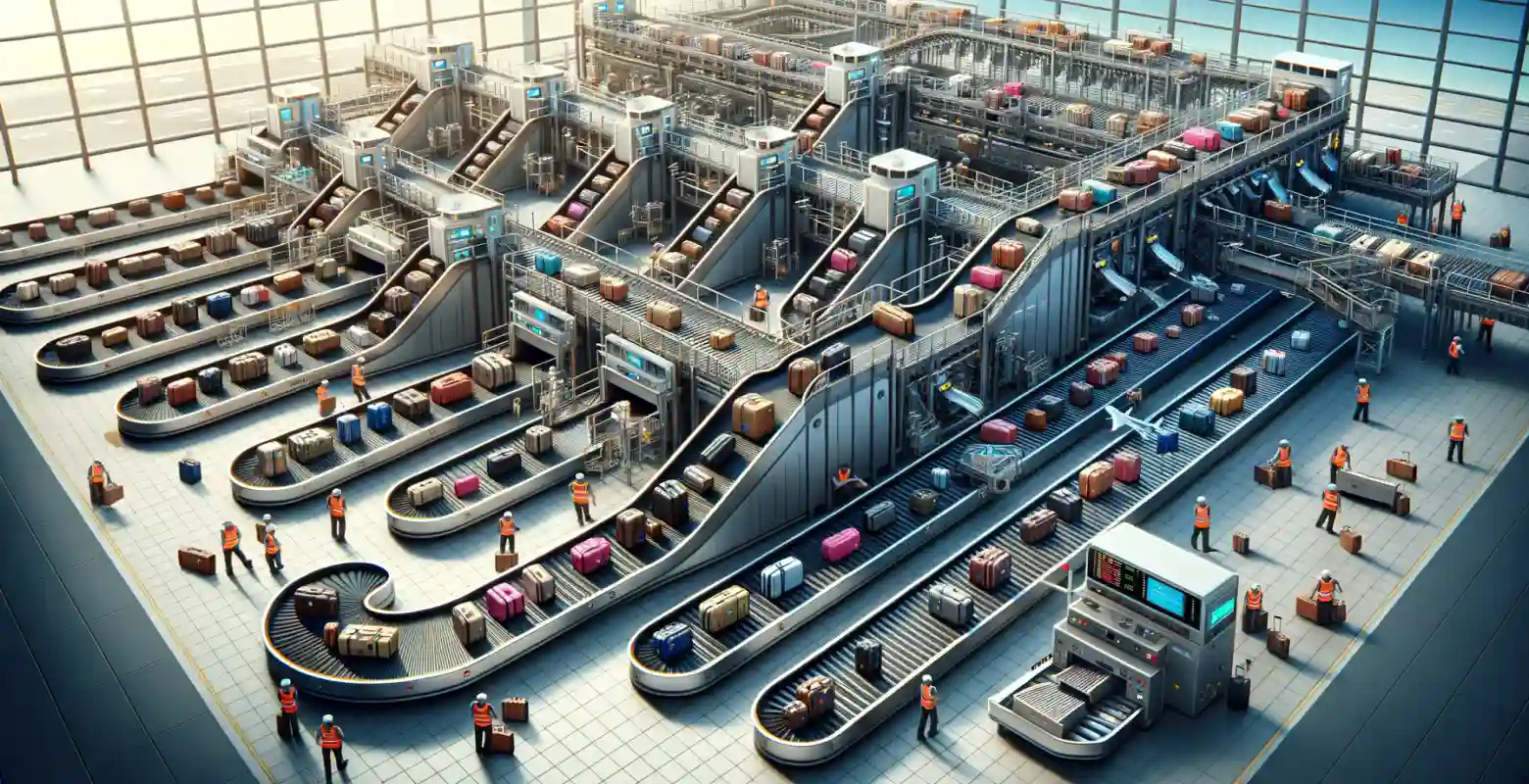How does the baggage system work at airports?
Introduction
Baggage systems at airports are an essential element of modern air travel. Every day, millions of passengers around the world entrust their luggage, hoping it will reach its destination at the same time as they do. An effective baggage management system is crucial for the operation of every airport, influencing operational efficiency and passenger satisfaction. Understanding how this complex mechanism works is important for both travelers and those working in the aviation industry.
History and Development of Baggage Systems
The first baggage systems were relatively simple and relied on manual luggage transport by employees. With the development of aviation and an increase in the number of passengers, it became necessary to introduce more automated solutions. In the 1970s, the first mechanized systems were introduced, significantly speeding up the baggage handling process. Today's systems are based on advanced technology, including the use of scanners, conveyor belts, and baggage traffic management software.
How Does a Modern Baggage System Work?
A modern baggage system at airports is a complex mechanism that combines various technologies to ensure the fast and secure transport of luggage. The process begins when a passenger checks in their luggage. The luggage is labeled with a unique barcode that allows for tracking at every stage of the journey.
Conveyor Belts and Baggage Sorting
After check-in, the luggage is placed on conveyor belts that transport it to a central sorting point. There, scanners read the barcode and direct the luggage to the appropriate destination. Advanced systems can sort thousands of pieces of luggage per hour, which is crucial for large airports.
Baggage Security and Screening
Security is a priority in baggage management. Each suitcase goes through a security screening system that scans it for the presence of dangerous items. If suspicious items are detected, the luggage undergoes additional checks by the relevant authorities.
Technologies Used in Screening
Various technologies are used for baggage screening, such as computer tomography (CT) scanners, X-ray scanners, and explosive material detectors. This allows for a thorough inspection of the luggage contents without the need to open it.
Challenges and Future of Baggage Systems
Despite technological advancements, baggage systems still face many challenges. System failures, sorting errors, or data synchronization problems can lead to delays and lost luggage. In the future, efforts are being made to introduce even more advanced solutions, such as Radio-Frequency Identification (RFID), which enables even more precise luggage tracking.
Impact of the COVID-19 Pandemic
The COVID-19 pandemic has led to the implementation of additional safety and hygiene measures in baggage handling. Airports had to quickly adapt to new requirements, resulting in accelerated implementation of touchless technologies and process automation.
Summary
Baggage systems at airports are complex mechanisms that combine modern technologies and advanced logistical processes. Their effectiveness directly impacts passenger experiences and the operational functioning of airports. Despite facing many challenges, continuous technological development and adaptation to changing conditions make it possible to believe that the future of baggage management will be even more efficient and secure. Travelers can expect an increasingly better quality of service, and the aviation industry can look forward to further improvements in managing the flow of luggage.






Number of comments: 0